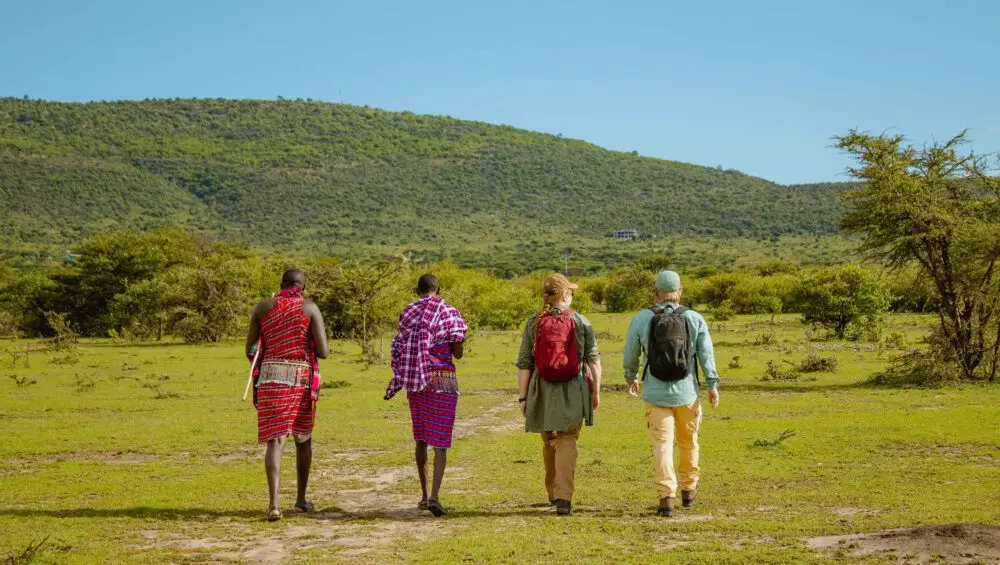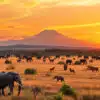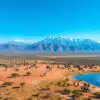Your Ultimate Guide to a Masai Mara Safari Experience
Imagine this: you’re bouncing along in a 4×4, the African sun painting everything gold, and then you spot it—an elegant giraffe calmly munching on acacia leaves. This is just a normal morning in the Masai Mara. If you’re considering a safari adventure, let me tell you, it’s an experience straight out of a National Geographic special, but where do you start? Strap in, because I’m about to give you the low-down on making the most out of your Masai Mara safari.
When to Go
Timing is everything, right? The Masai Mara is no exception. The ultimate time to visit is during the Great Migration, which typically occurs between July and October. This is when millions of wildebeest, zebra, and gazelle traverse the plains in search of greener pastures. It’s like the ultimate wildlife version of an obstacle course. Picture it: rivers teeming with hungry crocs and lions on the prowl—nature’s drama at its finest.
But hey, don’t sweat it if you can’t make those dates. The Mara is a year-round destination, each season offering a unique spectacle. Avoiding the migration means fewer crowds and, sometimes, a more personal connection with the landscape.
Choosing Your Safari
So, how do you want to experience the Mara? Are you the luxury lodge type, or does camping under the stars sound like your jam? The Masai Mara caters to all tastes and budgets, from opulent tented camps with the comforts of home (and then some) to more rustic options that bring you closer to nature.
And let’s talk about those game drives. Morning drives come with crisp air and lively animals, while evening drives showcase breathtaking sunsets and nocturnal stirrings. Can’t decide? Most accommodations offer multiple drives, so why not do both? Remember, this is your adventure. Our Suggested and Recommended Safari, Book Now.
Don’t Miss the Cultural Experience
A safari in the Masai Mara isn’t just about the wildlife; it’s also an incredible opportunity to meet the Maasai people. The Maasai have lived in harmony with the land for centuries, and many lodges offer cultural visits to Maasai villages. This isn’t just a tourist stop; it’s a chance to learn about the Maasai’s way of life, traditions, dances, and crafts. Seriously, when else are you going to get the chance to jump in a traditional Maasai dance? Spoiler: It’s harder than it looks but so much fun.
What to Pack
Packing for a safari is an art form. You’ll want to bring layers—mornings can be chilly, but it heats up quickly. Choose neutral colors to blend into the savannah, but maybe leave the leopard print at home; you want to see wildlife, not confuse it. Don’t forget a good camera and binoculars; you’re going to want to capture every moment.
Lastly, bring an open heart and a sense of adventure. The Masai Mara has a way of changing how you see the world.
A Parting Thought
Booking a Masai Mara safari is like RSVPing to Mother Nature’s most exclusive party. Whether you’re witnessing the raw drama of the Great Migration, locking eyes with a lion, or sharing a moment with the Maasai, it’s an experience that etches into your soul. My own trip felt less like ticking something off a bucket list and more like coming home, in an I’ve never been here before but I belong kind of way. And trust me, you’ll leave with more than just photos—you’ll leave with stories that feel too wild to be believed. So, when are you going?
Remember, the Mara is not just a destination; it’s a journey. A journey into the heart of the wild, into the depths of human tradition, and, perhaps, into a new understanding of our place in this grand, natural tapestry. Safe travels, future safari-goers!



